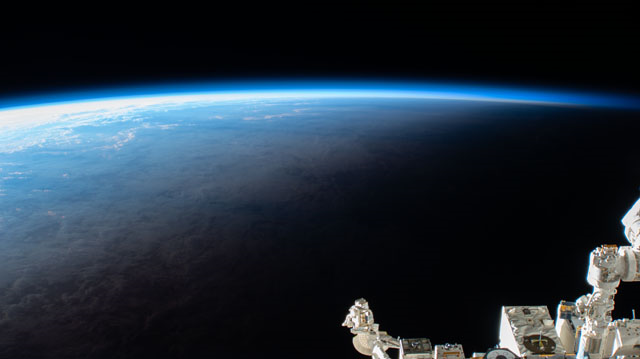Research into Fluid Dynamics, Astronaut Health and Earth Wraps Up Science-Centered Week

Aboard the International Space Station, a flurry of research activity is underway before the Expedition 63 crew winds down to the weekend, along with essential maintenance tasks to ensure the longevity of the orbiting laboratory.
Commander Chris Cassidy crossed off a few housekeeping items, like replacing the carbon dioxide sensor for the Cell Biology Experiment Facility and stowing Rodent Research hardware for return on a future SpaceX mission, in addition to completing additional tests runs and closeout activities in support of the Fluidics experiment. Future spacecraft and their fuel systems will get a boost from this investigation, which uses the measurement of liquid displacement within a sphere to gather observations in how fluids behave inside a fuel tank.
Cassidy also spent time working with the Advanced Plant Habitat mounted in the station’s EXPRESS rack to gather sound-level measurements. The habitat itself provides a large and enclosed chamber with stringent environmental controls, designed to give commercial and other bioscience research suitable conditions in which to grow despite the hostile environment to the station’s exterior: space.
Flight Engineers Anatoly Ivanishin and Ivan Vagner, cosmonauts from the Russian space agency Roscosmos, worked together to complete life-support hardware maintenance tasks such as inspecting and inventorying the gear. Ivanishin continued the routine chores, cleaning out the ventilation system within the Zvezda service module and also doing a check of Russian video-recording equipment.
After setting up an electrocardiogram for a 24-hour survey of his own heart health, Vagner terminated the test. In addition to investigating the effects of long-duration space travel on astronauts, he continued with setup and observation of our own planet using Earth photography. While the universe remain the ultimate unknown, there are still phenomena on Earth that scientists do not fully understand. For those particular mysteries, observations from station could prove eminently useful.
Learn more about station activities by following the space station blog, @space_station and @ISS_Research on Twitter, as well as the ISS Facebook and ISS Instagram accounts.
from Space Station https://ift.tt/3mdIF5Z
Comments
Post a Comment